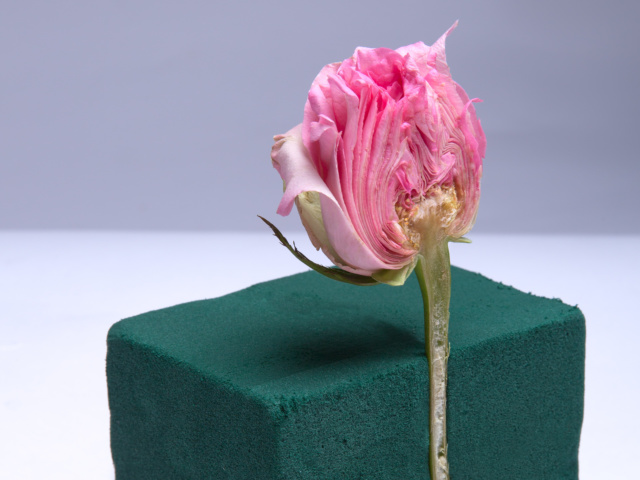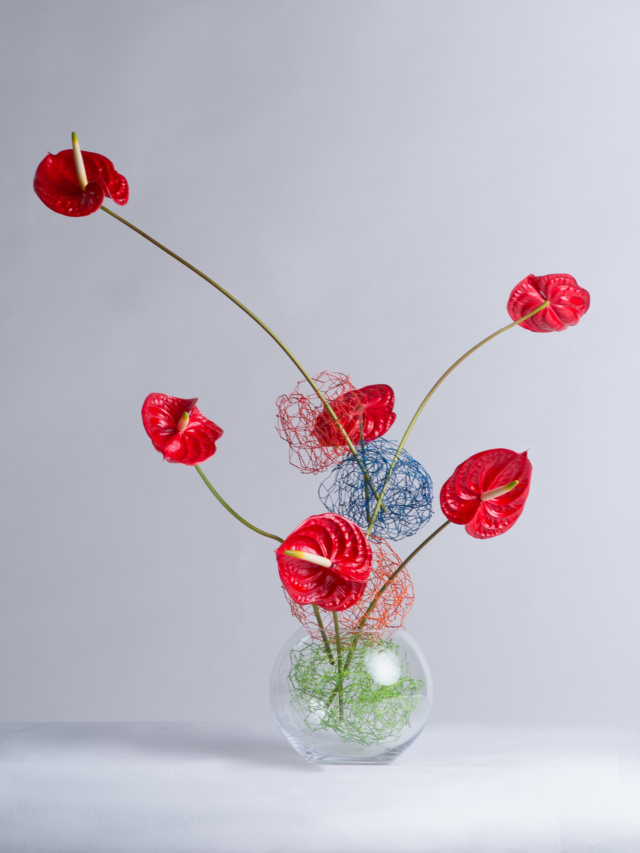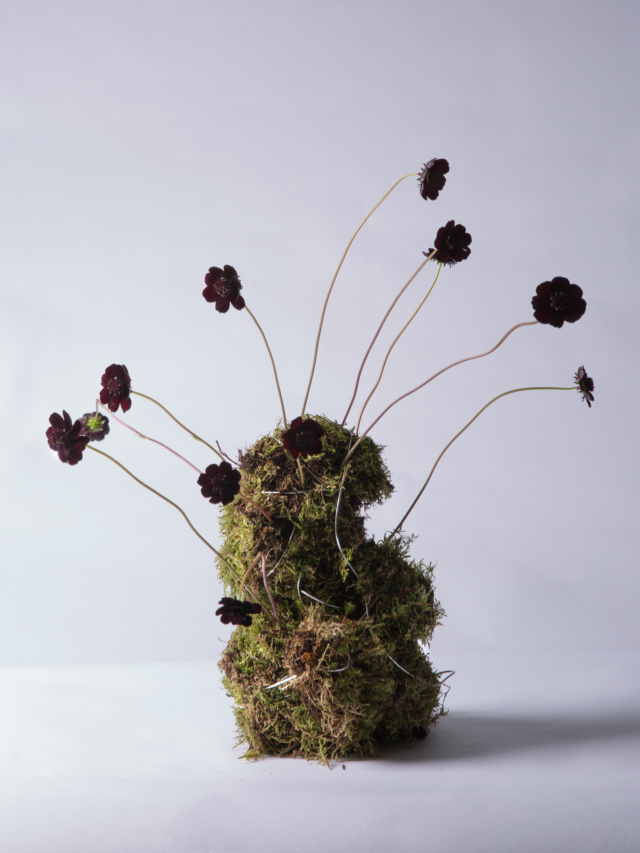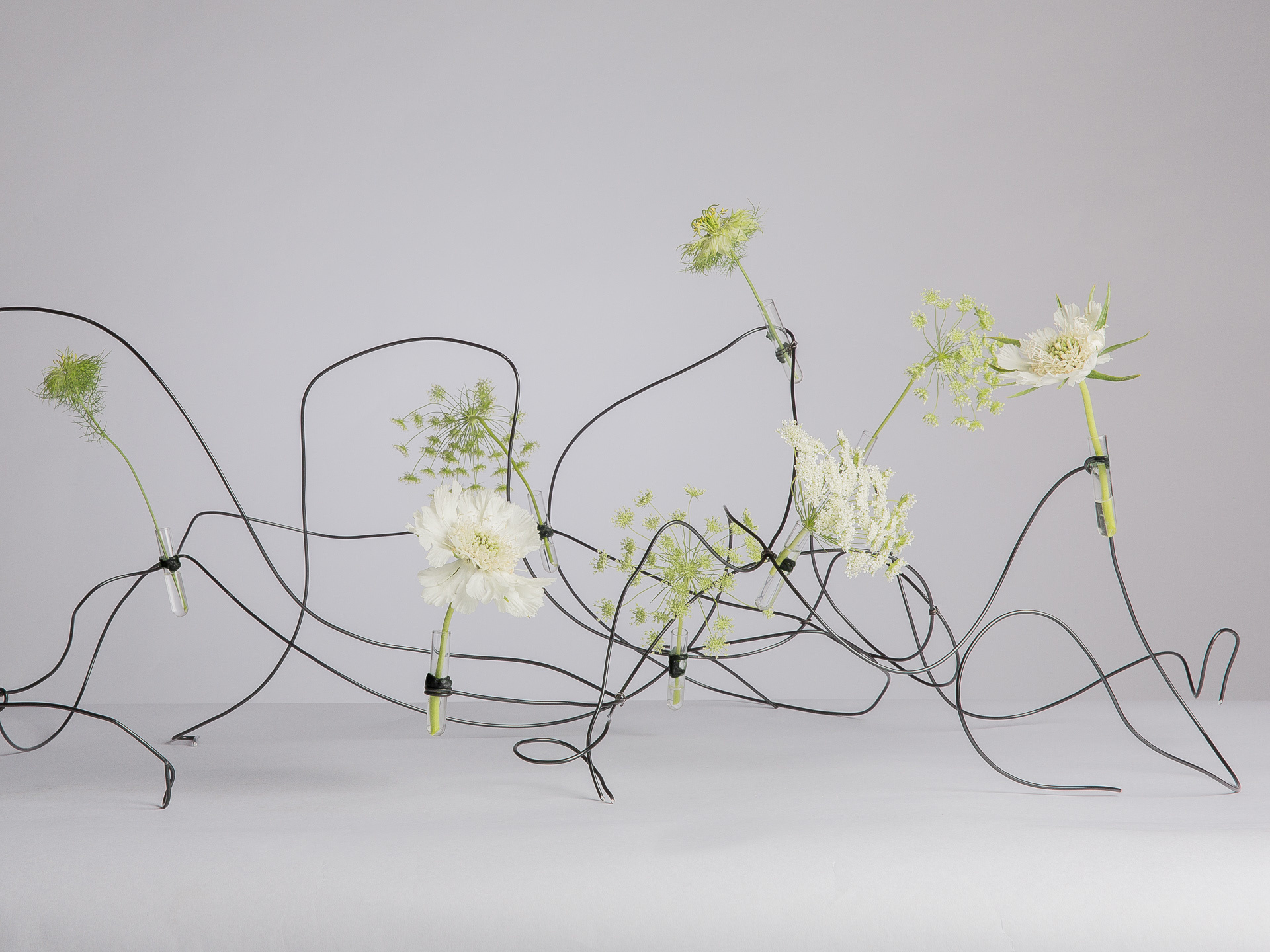2 August 2018
Like other forms of art, floristry exists in a state of constant flux, changing from one moment to the next. Sometimes those changes are cultural or aesthetic, and sometimes, they are driven by technological innovation. An example of the latter is the creation of floral foam. Now ubiquitous, you probably know it as OASIS®. Its creation by Vernon Lewis Smithers in 1954 was a milestone for floristry, and in the decades since, it has revolutionised the art.
OASIS®'s appeal is no mystery: it’s unbelievably absorbent, and increases its weight when soaked by a factor of forty. It can keep flowers hydrated for as much as four days (without additional water), is easy to transport, holds flowers tightly in place, and is incredibly easy to use. However, there is one drawback to floral foam: it is non-biodegradable. In our environmentally-conscious world, where David Attenborough’s Blue Planet has captivated young and old alike, and every year sees the record for 'hottest year in recorded history' broken, this has become a major concern.


Like all people working in the industry, we feel it’s important to voice our opinion on the matter. We will, of course, continue to instruct our students in the use of floral foam (to not do so would be an educational disservice, given its usefulness to professional florists). We will also use it ourselves as and when appropriate. However, we remain committed to the use of more environmentally friendly alternatives if-and-when they become viable. More immediately, we are also highly trained in the historical alternatives to floral foam. We use these techniques ourselves, and we teach them to our students.
Mrs. Barbara Clarke, an invaluable source of knowledge regarding the history of floristry, and former employee of Constance Spry, highlights the use of chicken wire as an alternative base for flowers:
In my Winkfield days, all students had to arrange in wire. It made people push flowers well into the wire and make sure all stems were under water. Look at the flowers and follow natural shapes. Encouraging you to develop an eye when picking or choosing your flowers. In exams, marks were deducted if flowers were not under the water line.
—Barbara Clarke


Chicken wire is a particularly effective medium with which to create structures for flower arranging, due to the netted effect of its design. It’s not known exactly when chicken wire became used in floristry, but the first wire netting machine was built in 1844. Our independent research on the subject suggests that chicken wire had probably made its way into the world of flowers by the 19th Century, and it features prominently in written accounts of the art by the early 20th Century.
The particular structure of chicken wire, and the manipulations necessary to use it for flower arranging (which involve various folds and shaping) mean that it was unsuitable for very small arrangements. As a result, it was most prominently featured in vases during the first half of the 20th Century. Today, we have learnt to apply it to smaller items, such as bridal bouquets, and we also use it in the construction of large displays like arches, staircases, and walls. For this reason, it is self-evident that chicken wire is, and has always been, an incredibly useful medium to use for weddings.
In the past, smaller arrangements, like bridal bouquets and baskets, would usually be wired – and as soon as we think about wiring, we need to introduce moss. Moss was a natural precursor to floral foam. Soaked in water and mounted to a shape, moss was widely regarded as a base in itself or – in larger displays – it could be attached to a metal structure (like a wreath, cross or chaplet). Individual flowers were then mounted and secured into the moss pad.
Mrs. Clarke assures us that in Constance Spry’s time, moss was only used in synagogues and for funerals. Its eventual replacement with floral foam comes down to convenience: using moss as a base is time consuming, and requires considerable skill in wiring. However, with the increasing prominence of 'green' floristry, working with moss is coming back into vogue – at least for arrangements that do not need to last longer than a few days. It is also true that combining moss pads with underlying chicken wire structures offers a new route to creating big arrangements for florists who want to avoid the time and effort of complex wirework.


Another alternative to floral foam known to Constance Spry is kenzan. A kenzan is a heavy lead plate surmounted with brass needles, to which flower stems can be affixed. Also known as a “flower frog,” the kenzan is a staple tool in ikebana, the Japanese style of flower arranging. Translated literally, kenzan means “sword mountain” - a reflection of its unique, spikey, appearance.
Kenzan are still used widely in floristry – and considering the fact that ikebana began in the 15th Century, it may be one of the oldest floristry techniques on the planet. Kenzan has many qualities that make it an essential consideration for florists looking for a base: it naturally opens the stems of flowers, allowing them to take in more water and last longer, it is reusable, and relatively easy to clean and repair, and it is refreshingly low cost. The only downside to this tool is security of the arrangement during transport – for this reason kenzan is best used in a dedicated location, where movement of the arrangement will not be an issue.



There are a number of other alternatives to floral foam – the most viable of which is simply the use of green foliage. In the days since Constance Spry, we have been taught to ensure that there is no foliage beneath the water line because this creates the perfect environment for bacteria to grow and leads to a shorter lifespan. However, for one-day arrangements, or longer periods where the water can be regularly changed, there’s no reason not to consider green foliage as a potential base. As a result, this method is still in use today, particularly with bending willows, where it has undoubtedly become part of the traditional design.
Another alternative to floral foam, which has fallen out of favour today, is Florapac. Mrs. Clarke remembers: 'In the sixties this was the biggest and easiest medium before Oasis. A white block, very soft and had to be crumbled by hand and soaked in a tub of water before being packed into containers with just a single bit of netting over the top to hold it in place. Wonderful for glass goblets, antique vases, baby baskets, etc. This could be used time and time again. I do not know why it was phased out, but I guess it was something to do with being a health risk as this could be very dusty to break for soaking and certainly made you cough.'
Other solutions which have decreased in popularity include glass domes, paper, test tubes, sand, marvels, straw, clay and plasticine.
It is easy to become nostalgic for the past, partly because we naturally remember what has gone before as a 'golden age' and partly because the past is where our heroes live.
Life before floral foam was quite different. We certainly had to look at the natural shape of every thing used. Most arrangements were softer and flowers did not always have straight stems as today's Dutch flowers have. Nothing looked like what flower club ladies do today.
—Barbara Clarke

However, no one can turn back time. The best approach to the past is to learn from it – not idolise it. Studying the techniques that were used before floral foam became ubiquitous is valuable not just for academic reasons, but because it makes us better florists, and gives us another set of tools with which to innovate the industry. In the words of London Flower School tutor Marzena Joseph: 'Knowing the history of the trade is crucial for those wanting to move forward and try new techniques. Only a tree with strong roots can grow big branches. Only those of us knowing the past can create a totally new and original future.'


